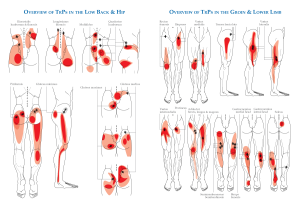How To Prevent Running Injuries
Attention Runners: Sustained an Injury? What every chiropractor would like you to know before you get back on the road: Running injuries are often a result of overuse. That means that the runner has not allowed enough recovery between runs before going back out on the road. Running puts incredible demands on your tissues (muscles, tendons and bone) and not resting enough between …

Attention Runners: Sustained an Injury?
What every chiropractor would like you to know before you get back on the road:
Running injuries are often a result of overuse. That means that the runner has not allowed enough recovery between runs before going back out on the road. Running puts incredible demands on your tissues (muscles, tendons and bone) and not resting enough between sessions deprives them of the time these tissues need to recover and adapt to the increase in training.
Think of it this way. If you are a 5k runner, would you suddenly go out to train for a marathon by increasing your distance directly to 42k and try to keep that up regularly? Not likely. You know that your body will get hurt and that you need to build up to your goal and let your tissues, your heart and your lungs adapt to a new training schedule gradually.
So how do you build up?
There are a lot of theories out there about how to increase your training without exceeding what your body can handle in terms of the demand. The problem with the theories is that they don’t make room for individual differences such as physiology and genetics. So, the rule of thumb is that you need to listen, feel, hear and see what your body is telling you in order to adjust your training and continue to build towards your goal.
Guiding principles – reduce your demand then increase your capacity
Runners often come to us once their injuries have already been in progress for some time. For example, runners often say they started to hurt after 1 hour initially and now it hurts 30 minutes into the run. If this sounds familiar, here is a course of action to follow:
- Reduce the demand on your body: We don’t often recommend stopping running completely. We want you to cut back so that there is no pain during the run and no pain the next day. If the pain starts at 30 minutes, start with 15 or 20 minutes.
- Switch it up: consider changing the surface and the route you run on. Some surfaces are harder on the body than others so a change can be beneficial: switch from asphalt to trails for example.
- Alternate your routes. If you run on one side of the street, try coming back on the same side (to alternate the camber on the sidewalk), , limit hills and avoid icy conditions. Try pool running.
Setting Goals to Get Back on the Road After a Running Injury
By following the tips above, you can effectively establish a baseline for pain-free running. The next step in moving ahead in training is to increase your capacity. Here are a few ways to do just that:
- Treatment: treatment by a chiropractor or health professional can help increase the capacity of your tissues to withstand the demands of running
- Improve nutrition: good performance and optimum healing means being well trained AND being well fueled. Consuming fruits/vegetables, quality protein, and avoiding processed foods is a great start to improving your nutrition.
- Decrease stress to get better sleep/rest: sleep is an important training and healing tool.
- Consider cross training: Avoid overusing your muscles. Mix it up. This is a great way to keep moving toward your goal and still challenge your body to increase the beneficial effects of training.
- Hydration is essential: Hydration affects running performance very directly. If you are not meeting your body’s demand for liquids, you can become dehydrated and could suffer heat exhaustion. On the other hand, drinking too much water during training can also be dangerous and can lead to hyponatremia or water intoxication. Know when and how much to drink when training. For health and performance, we recommend that you consume fluids before, during and after running to avoid dehydration. Runners can avoid either end of the scale by simply listening to their thirst.
- Challenge yourself gradually: Add speed training or hill training slowly and follow your plan. Remember that if the pain subsides, this doesn’t mean that you should immediately go back to your old routine as that might be why you were injured in the first place.
Dr. Brad Muir, DC, FRCCSS(C)
Clinician, CMCC Campus Clinic, 6100 Leslie Street, Toronto, ON
Associate Professor, Canadian Memorial Chiropractic College
Dr. Scott Howitt, DC, FRCCSS(C)
Clinician, CMCC Clinic at Sunnybrook Health Sciences St. John’s Rehab Hospital
Associate Professor, Canadian Memorial Chiropractic College
(c) – Read entire story .




